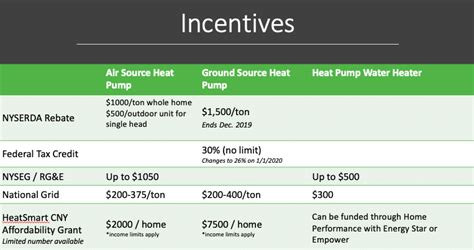Unlock Savings: How the National Grid Heat Pump Rebate Can Lower Your Energy Bills
As energy costs continue to rise, homeowners are seeking effective solutions to lower their energy bills while making environmentally friendly choices. One such solution is the heat pump, an energy-efficient alternative to traditional heating systems. The National Grid Heat Pump Rebate program offers a significant financial incentive for homeowners to adopt this technology, making it easier than ever to switch to renewable energy.
Understanding Heat Pumps
Heat pumps work by transferring heat instead of generating it. They utilize a small amount of energy to move heat from one place to another, which can drastically reduce the amount of energy needed to heat or cool your home. There are several types of heat pumps, including air-source, ground-source (geothermal), and water-source pumps. Each has its unique benefits, and knowing the right type for your home can enhance energy efficiency.
The Benefits of Heat Pumps
Heat pumps offer numerous advantages over traditional heating systems, including:
- Energy Efficiency: Heat pumps can be up to three times more efficient than traditional furnaces and boilers.
- Lower Carbon Footprint: By relying on the renewable heat from the environment, heat pumps significantly reduce greenhouse gas emissions.
- Cooling Capabilities: Heat pumps can also work as air conditioners, providing year-round climate control.
- Rebates and Incentives: With programs like the National Grid Heat Pump Rebate, the upfront costs become more manageable.
National Grid Heat Pump Rebate Program Overview
The National Grid Heat Pump Rebate program is designed to encourage homeowners to invest in heat pump technology. It offers substantial cashback on the purchase and installation of qualifying heat pumps, helping to ease the financial burden associated with upgrading your home heating system.
To qualify for the rebate, homeowners must meet several criteria:
- The heat pump must meet specific efficiency ratings.
- Installation must be carried out by a licensed professional.
- Homeowners must apply for the rebate within a certain timeframe after installation.
How to Apply for the National Grid Heat Pump Rebate
Applying for the rebate is a straightforward process:
- Research and select a qualified heat pump suitable for your home.
- Hire a licensed contractor for the installation.
- Complete the rebate application form, ensuring all necessary documentation is attached.
- Submit your application within the designated timeframe.
Once your application is reviewed and approved, you will receive the rebate, which can help cover a portion of your installation costs and thus lead to considerable savings over time.
Calculating Your Savings
By switching to a heat pump, homeowners can expect to see a significant reduction in energy costs. For instance, with the current energy prices, a family using a gas furnace may spend approximately $1,500 annually on heating. In contrast, a heat pump could reduce that cost to about $800, saving families around $700 each year.
The rebate can further increase these savings, making the switch to a heat pump not only beneficial for the environment but also for your wallet. Over the lifespan of the unit, this could amount to thousands of dollars saved.
Environmental Impact
In addition to financial savings, heat pumps contribute positively to the environment. By using renewable energy from the air or ground, they reduce reliance on fossil fuels, which helps lower carbon emissions. This transition is essential for combating climate change and promoting sustainable living.
Furthermore, as governments and energy providers work towards reducing carbon footprints, programs such as the National Grid Heat Pump Rebate are vital in supporting these initiatives while giving homeowners the financial means to make these upgrades.
Conclusion
The National Grid Heat Pump Rebate program serves as an excellent opportunity for homeowners looking to invest in energy-efficient heating solutions. With the potential for significant energy savings and the benefits of a reduced environmental impact, switching to a heat pump is a smart move for many homeowners. Take advantage of the rebates available and unlock the savings that come with choosing renewable energy for your home.
FAQs
1. What is a heat pump?
A heat pump is a device that transfers heat from one location to another, providing heating and cooling for a home. Unlike traditional furnaces that generate heat, heat pumps move heat, making them more energy-efficient.
2. How do I qualify for the National Grid Heat Pump Rebate?
To qualify, your heat pump must meet specific efficiency ratings, be installed by a licensed contractor, and you must apply for the rebate within the required timeframe.
3. How much can I save with a heat pump?
On average, homeowners can save hundreds annually on energy bills. The National Grid Heat Pump Rebate can additionally reduce installation costs, leading to further savings.
4. How do I apply for the rebate?
Review eligible heat pumps, hire a licensed contractor for installation, complete the rebate application form, and submit it with the required documentation.
5. Are heat pumps environmentally friendly?
Yes, heat pumps use renewable energy from the environment, significantly reducing carbon emissions compared to fossil fuel heating systems.
Download National Grid Heat Pump Rebate
